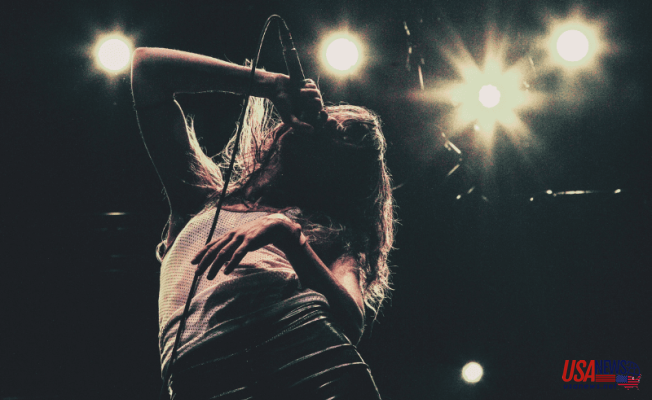When you go and see a live band, you’ll likely find yourself glued to their performance as they take you on a journey through their set. Alternatively, you’ve probably been to a highly anticipated show and felt you couldn’t wait until it was over. These are the groups that just play their music and don’t interact with the audience at all. The reason for this stark contrast has nothing to do with musical talent and all to do with stage presence. If you’re part of a band and find people turning from your shows, you’ve come to the right place. Below, we give you the ultimate guide on improving your stage presence.
What Do We Mean by Stage Presence?
Stage presence is all about captivating the audience and holding their attention. Think of your music like words on the page of a novel; your job is to guide the audience from beginning to end. If you have a fantastic stage presence, you will separate yourself from the amateurs.
Once you’ve mastered stage presence, you should take full control of your music and learn how to start a record label over at PIRATE. While you’re there, you should book a rehearsal slot for your band to practice stage presence. When you get to the studio, you can make the most of their state-of-the-art recording facilities to bring your music to life.
Remove Silence
There needs to be continuity throughout your performance. Your audience doesn’t want to stand there while you take a break between every song. If you’re putting silence into your set, make sure it serves a purpose. When you’ve finished playing a song, your band needs to be ready to lead into the next track. If you’re all staring at each other looking clueless, your audience will see you as an amateur, which is when the bottles start flying.
When you need to take breaks to swap out guitars or drink water, you should use it to talk to your audience or play an instrumental. When you learn how to banter with the audience, you can put in verbal cues for heading into the next song.
Rehearse Lines
As mentioned in the previous section, you need to remove silence from your sets. You can do this by learning what you’re going to say. When you’re in performance, practice your entire show down to audience interaction. That way, when you take to the stage, you won’t find yourself lost for words.
Don’t Forget Your Audience
When you play a show, you’re the star of the show. However, you need to remember that, without your audience, you won’t have a show to play. Once you’ve taken to the stage, everything you do needs to be about your audience. You need to think about how you can keep them interested throughout. When the audience leaves the show, you need to understand how they’ve been impacted. If you can get this right, you will have fans coming back for more.
Have Fun
You need to play your music while making sure you nail everything else in this guide but don’t forget to have fun. When your audience sees you having a blast on stage, they will feel more invested. Even if you’re not in the mood for the stage, just pretend that you are. After all, you’ve been hired to throw an entertaining show.
Be In the Moment
When you’re lost playing music, it can be easy to let yourself slip away into an absent mind. However, you need to use all your mind power to stay in the moment and focus on the performance at hand. Before you enter the stage, take a moment to let go of anything that has happened and put the future to the side. The only thoughts you need are to do with the present. Mastering this ability will improve your stage presence exponentially and help you to apply other aspects of this guide.
Engage with the Band
When you are part of a band, it’s important to have some chemistry thrown in there. When your band doesn’t interact with each other on stage, it tells the audience that you couldn’t care less about performing together. Acknowledge other band members when you get the opportunity, even if that’s just a nod or pat on the back after an awesome guitar solo.
Think Body Language
Connecting with your audience is important, but it goes deeper than how you play music and how you talk to the audience. Your body language speaks louder than your music. You can be playing the happiest song in the world, but if you look like you’d rather be anywhere else but on stage, your audience will lose interest.
Create Moments
As a performing artist, you need to create moments in your set. How will you use the lighting to emote mood? Will you transition between heavy sounds and acoustic melodies? You can put in these moments beforehand until you master the art. However, the greatest artists will recognize opportunity and make these moments feel natural.
Think Image
Your music is only part of the act; your band needs to promote a consistent vibe. This can shift from album to album, with the majority of bands running themes across their different works to make the start of new eras. This is essential throughout the entire music world, which you would learn if you took the time to read up on how to start a music label. Think about the type of audience you’d like to pull and the venues you are playing. When you decide what to wear, you can stray outside the box because you’ll be the center of attention. However, remember you will be elevated on stage, so put special thought into the shoes you wear.
Playing a live show takes more skill than playing music. You need to interact with the audience and keep them invested the entire time you’re on stage. If you can follow the advice above, you will have your audience screaming for an encore at every show.













